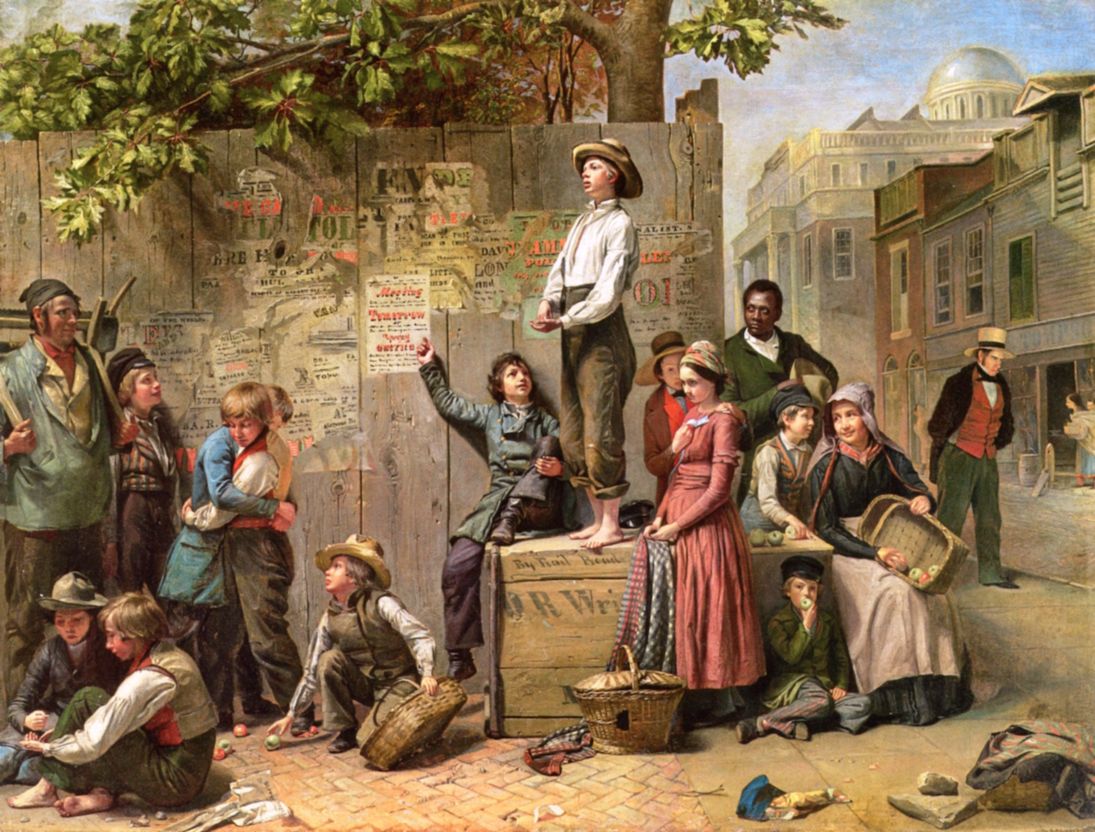The two-party system that is at the heart of the American political structure, in which the Democratic party has consistently played an important role, in that it has always sought and won the support of working people, since it claims to be a party of the common man. This claim has a long pedigree, and its roots lie in the election of Andrew Jackson, in 1828.
The years immediately preceding Jackson’s election saw the granting of voting rights to white males of all classes; as was customary at the time, women and slaves were excluded from the political process.
This was an important step forward, since previous to 1810, only men with property had the right to vote. Thus, by the time Jackson ran for the presidency, his voter-base was significantly increased, and his during the election some 54 percent of the voters turned out to cast their votes.
Thus, when Jackson won, his victory was seen as a triumph of the common man, and it also highlighted the importance of public opinion in a democratic government.
But this victory also served to heighten the profound differences between the industrialized north and the slave-economy of the south. Thus Jackson’s election brought crucial issues of class, labor, and federal power into greater focus.
Jackson’s politics depended upon a fundamental belief that the average person should run politics, rather than a few, patrician families. And Jackson saw himself as just such a common man, given his great experience in the army, and his stress on being in tune with the needs of the ordinary man.
In fact, many saw him as the personification of the rugged, American frontier spirit, which was seen as the spirit of American democracy, and inherently superior to European culture.
Jackson was viewed as an agrarian, which was the condition of the majority of Americans at the time, and his loss of his parents at an early age was used in his favor, as a tough, man of the people. As well, with Jackson, the Democratic Party came into its own, and became an important player on the political stage; in fact, Jackson’s was the party’s first president.
He initiated the first labor reforms by establishing a ten hour work day for federal shipyard workers; he was in favor of the abolition of debtors’ prison, where those who owned money were put in jail, until they paid their dues; and more importantly, he championed the mechanics’ lien law, which tackled the widespread abuse of bankruptcies laws by businesses, which previously could go out of business in order to pocket the back-wages of their workers.
Jackson’s vision of America also involved his notions of freedom and power. He believed in negative liberalism, inn that he believed that government power was in fact interfering to individual, person liberty.
He believed that individuals have to be independent, and that political independence only comes as a result of economic independence. Therefore, governments had to be restricted to a minimum, so they would not interfere with the wishes of the people.
This meant that Jackson favored a strict construction of the Constitution, strong rights for the states, and drawing support from government projects that did not benefit all of the people.
Henry Clay and the Whig Party held an entirely different view. They believed in “positive liberalism,” in which the government could actively make society better through institutional reforms.
Economic progress of the nation was seen to depend on government help, and private businesses were to be supported by the government. Thus, for the Whigs, there was a need for a strong, centralized government, a loose construction of the Constitution, especially the use of the “necessary and proper” clause that would fit any situation in order to advance the power of the government.
The Whigs also believed that men were entirely in charge of their own destinies, and therefore government of the people had to make a positive difference in the lives of the people.
This strongly federalist view was embodied in Henry Clay’s American System, which was ultimately a nationalist program. It sought the establishment of a national bank; it advocated a special tariff that would promote and protect domestic industry, and it promoted internal improvements, financially backed by the Congress.
The Whig vision of America called for a nation in which economic development was promoted and greatly diversified; in which dependence on imports would be significantly reduced; in which the various parts of the nation would come together and work harmoniously.
Thus, a Whig America would one in which the industrial future would be fully embraced, which would allow America to become a great manufacturing and commercial power.
In fact, Henry Clay’s, and the Whig’s, vision was largely accomplished, in that many of the elements of the American System were brought into practice by the Republican Party, which succeeded the Whigs.
